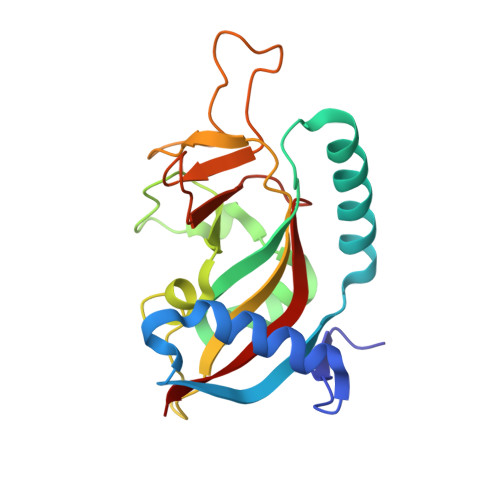Structural Basis for Potency and Promiscuity in Poly(ADP-ribose) Polymerase (PARP) and Tankyrase Inhibitors.
Thorsell, A.G., Ekblad, T., Karlberg, T., Low, M., Pinto, A.F., Tresaugues, L., Moche, M., Cohen, M.S., Schuler, H.(2017) J Med Chem 60: 1262-1271
- PubMed: 28001384
- DOI: https://doi.org/10.1021/acs.jmedchem.6b00990
- Primary Citation of Related Structures:
4R5W, 4R6E, 4RV6, 4TVJ, 4UND, 4UXB, 5LX6 - PubMed Abstract:
Selective inhibitors could help unveil the mechanisms by which inhibition of poly(ADP-ribose) polymerases (PARPs) elicits clinical benefits in cancer therapy. We profiled 10 clinical PARP inhibitors and commonly used research tools for their inhibition of multiple PARP enzymes. We also determined crystal structures of these compounds bound to PARP1 or PARP2. Veliparib and niraparib are selective inhibitors of PARP1 and PARP2; olaparib, rucaparib, and talazoparib are more potent inhibitors of PARP1 but are less selective. PJ34 and UPF1069 are broad PARP inhibitors; PJ34 inserts a flexible moiety into hydrophobic subpockets in various ADP-ribosyltransferases. XAV939 is a promiscuous tankyrase inhibitor and a potent inhibitor of PARP1 in vitro and in cells, whereas IWR1 and AZ-6102 are tankyrase selective. Our biochemical and structural analysis of PARP inhibitor potencies establishes a molecular basis for either selectivity or promiscuity and provides a benchmark for experimental design in assessment of PARP inhibitor effects.
Organizational Affiliation:
Program in Chemical Biology and Department of Physiology and Pharmacology, Health & Science University , Portland, Oregon 97210, United States.















